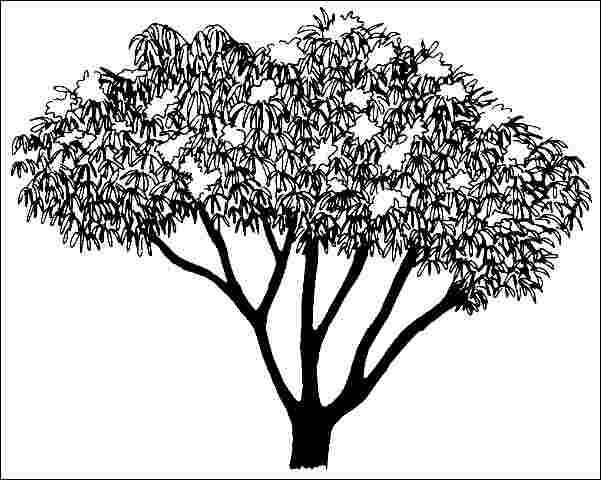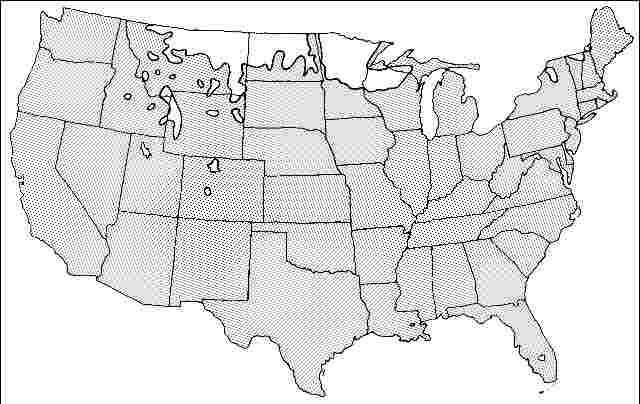Sambucus nigra subsp. canadensis 'Aurea': 'Aurea' American Elder
Introduction
A fast-growing deciduous shrub, American elder suckers quite easily and is often seen as a broad, spreading, multistemmed plant with bright green, pinnately compound, 12- to 14-inch-long yellow leaves arranged along the arching branches. But it can be effectively pruned into a nice, small, single or multi-stemmed tree but needs regular pruning to remove suckers growing from the base of the plant. In early summer (northern part of its range) or sporadically all year long (in USDA hardiness zone 9), American elder is literally smothered with 6- to 10-inch-wide clusters of yellowish-white blooms. These are followed by a multitude of small, cherry red berries which are quite popular with birds, and can be used in pies, jellies, or fermented to make a wine.

Credit: UF/IFAS
General Information
Scientific name: Sambucus nigra subsp. canadensis 'Aurea'
Pronunciation: sam-BEW-kuss nigh-gruh subspecies kan-uh-DEN-sis
Common name(s): 'Aurea' American elder, 'Aurea' common elder
Family: Viburnaceae
USDA hardiness zones: 4A through 11 (Figure 2)
Origin: native to North America
Invasive potential: native cultivar
Uses: container or planter; reclamation; trained as a standard; deck or patio; specimen

Credit: UF/IFAS
Description
Height: 8 to 13 feet
Spread: 6 to 10 feet
Crown uniformity: irregular
Crown shape: round
Crown density: open
Growth rate: moderate
Texture: fine
Foliage
Leaf arrangement: opposite/subopposite
Leaf type: odd-pinnately compound
Leaf margin: serrate
Leaf shape: elliptic (oval), lanceolate
Leaf venation: pinnate
Leaf type and persistence: deciduous
Leaf blade length: 2 to 4 inches, 4 to 8 inches
Leaf color: yellow
Fall color: yellow
Fall characteristic: not showy
Flower
Flower color: white/cream/gray
Flower characteristics: showy
Fruit
Fruit shape: round
Fruit length: less than 0.5 inch
Fruit covering: fleshy
Fruit color: red
Fruit characteristics: attracts birds; showy; fruit/leaves not a litter problem
Trunk and Branches
Trunk/bark/branches: branches droop; not showy; typically multi-trunked; thorns
Pruning requirement: needed for strong structure
Breakage: susceptible to breakage
Current year twig color: gray
Current year twig thickness: thick
Wood specific gravity: unknown
Culture
Light requirement: full sun
Soil tolerances: clay; sand; loam; acidic; alkaline; well-drained; extended flooding
Drought tolerance: moderate
Aerosol salt tolerance: unknown
Other
Roots: not a problem
Winter interest: no
Outstanding tree: no
Ozone sensitivity: unknown
Verticillium wilt susceptibility: susceptible
Pest resistance: resistant to pests/diseases
Use and Management
Ideal for use in naturalized landscapes where it will tolerate acid or alkaline soil and even some drought, American elder performs best in full sun on moist to wet, fertile soils. Plant it in the shrub border or locate it next to the patio for a wonderful flower display. The plant is often overlooked by the trade perhaps because it is so commonly found in and along the woods, but it has a place in the garden, although its rather random habit would not make it popular in the commercial landscape. Requires pruning to create a neat small tree.
A few cultivars include: 'Acutiloba', leaflets very deeply divided, a nice fine-textured plant; 'Adams', fruits in dense, large clusters, excellent for baking. There are a variety of other very attractive species.
Propagation is by seed or cuttings.
Pests
Borers, occasional leaf-chewing insects, may infest this tree.
Diseases
American elder can be infected by cankers, leaf spots, powdery mildew.



